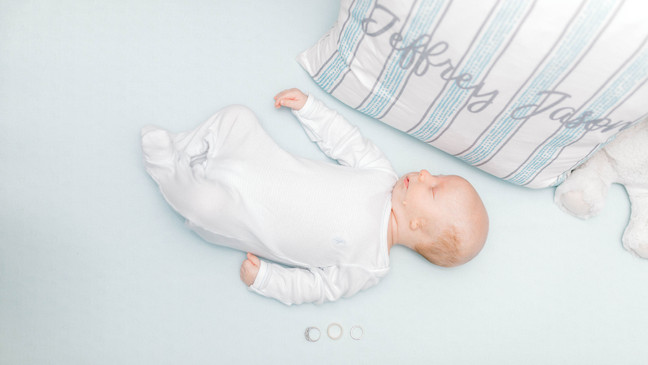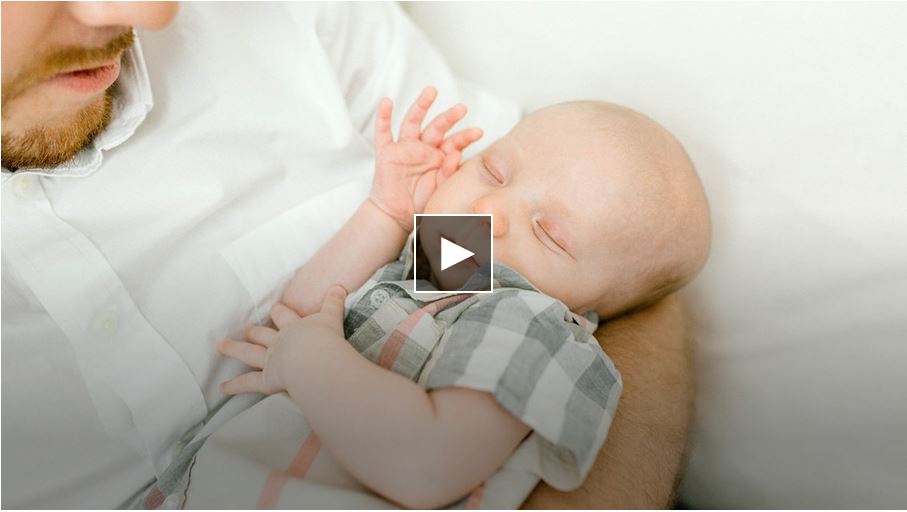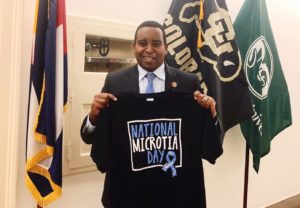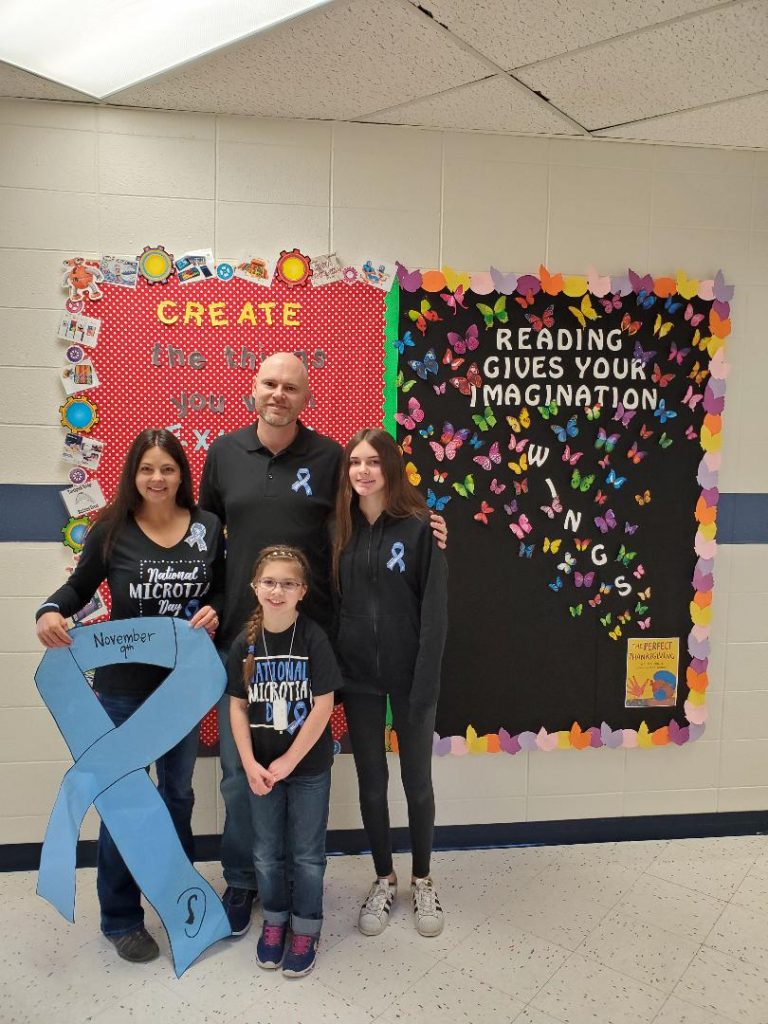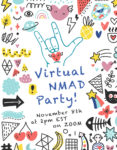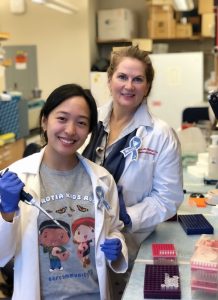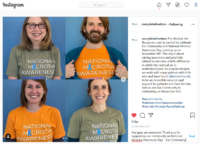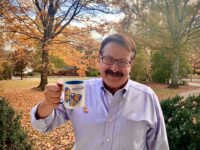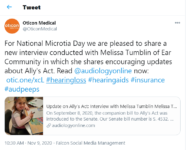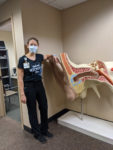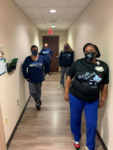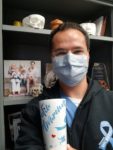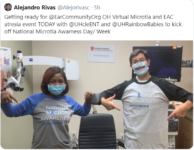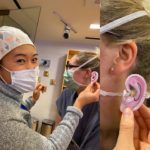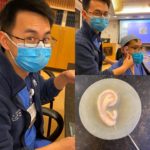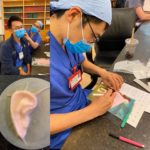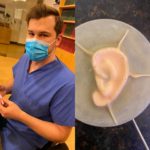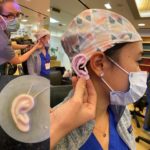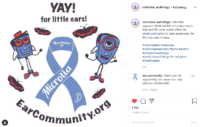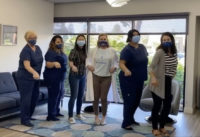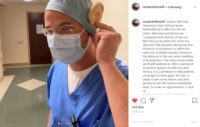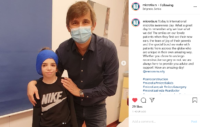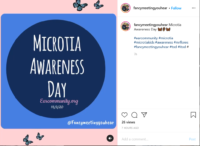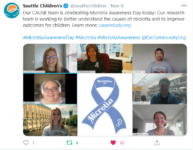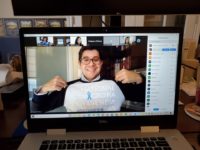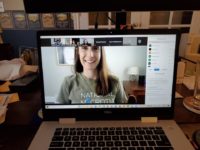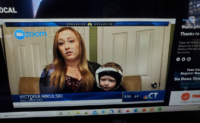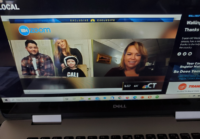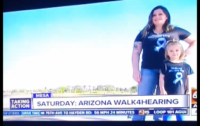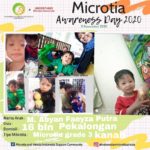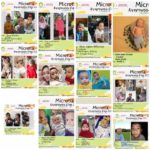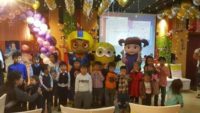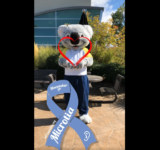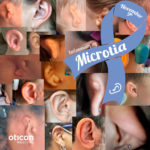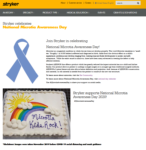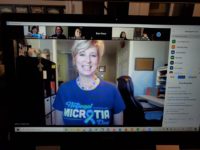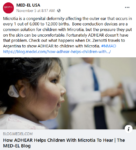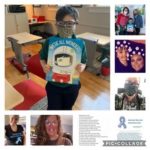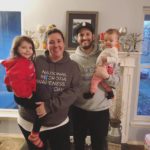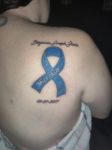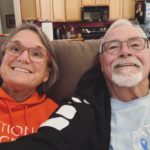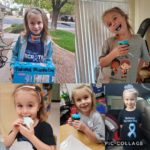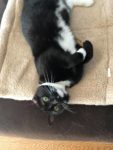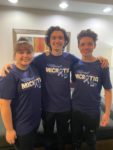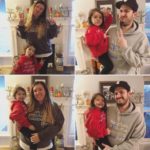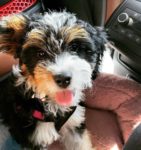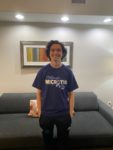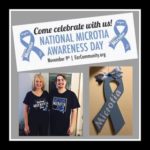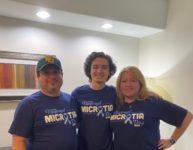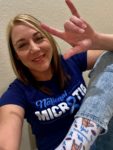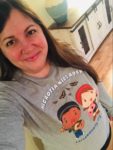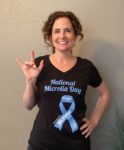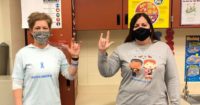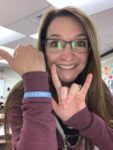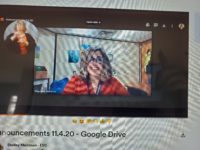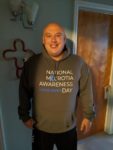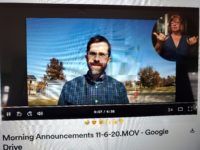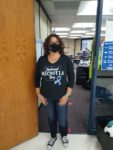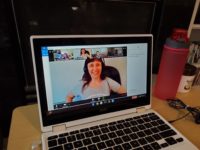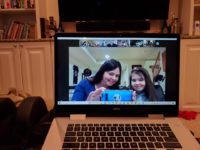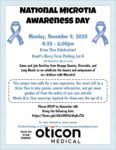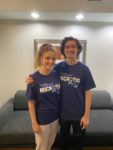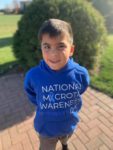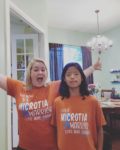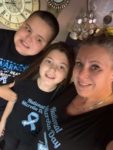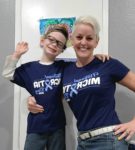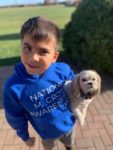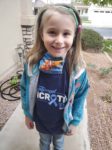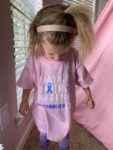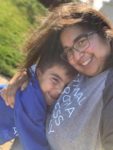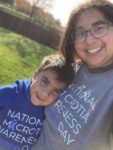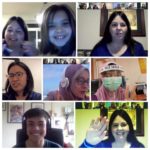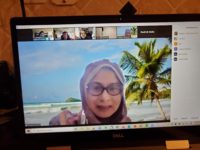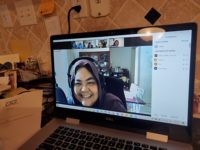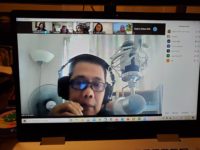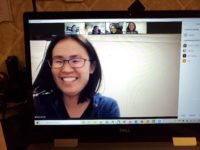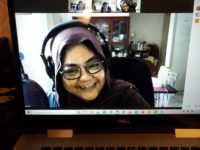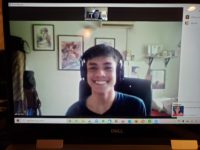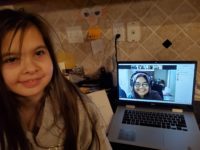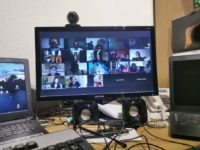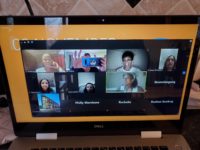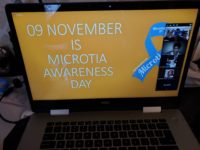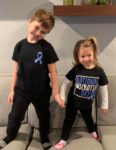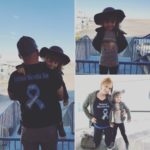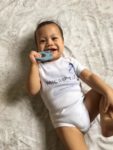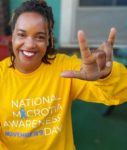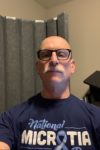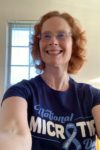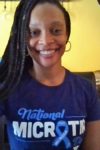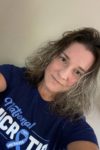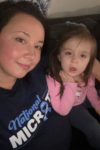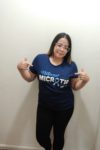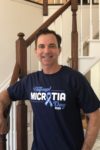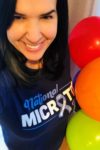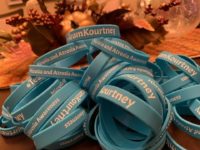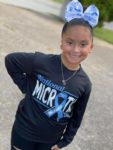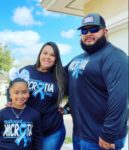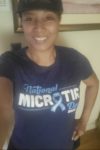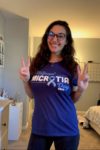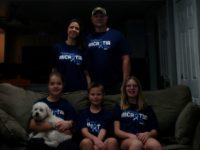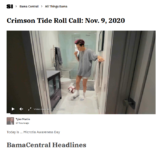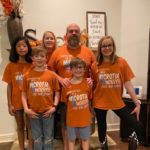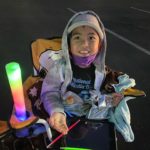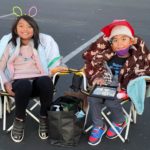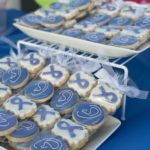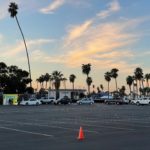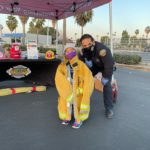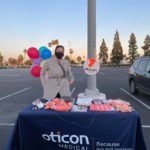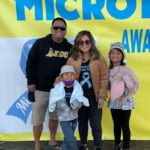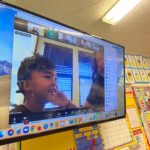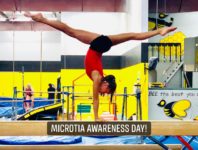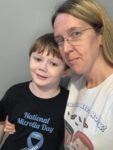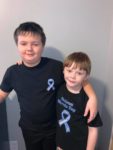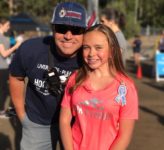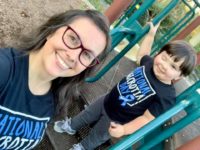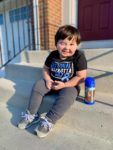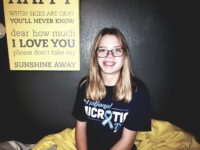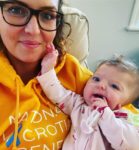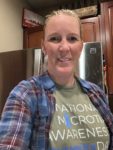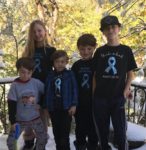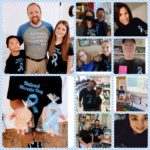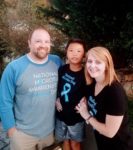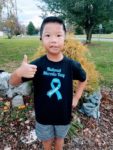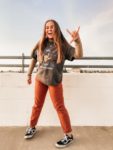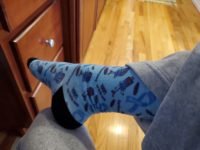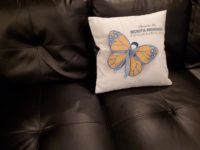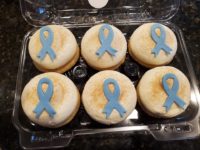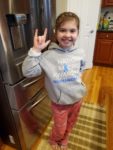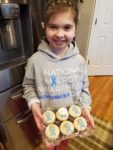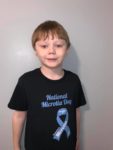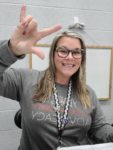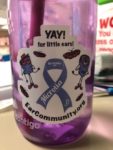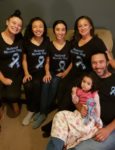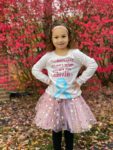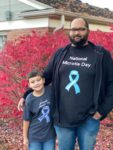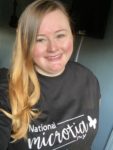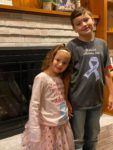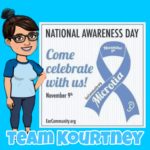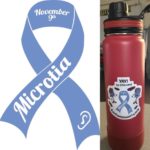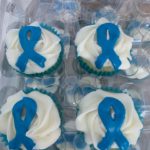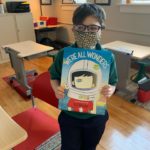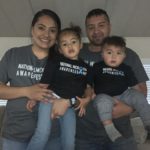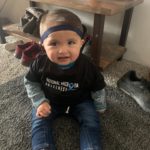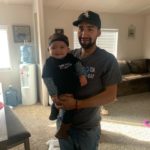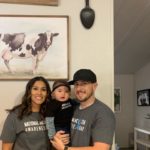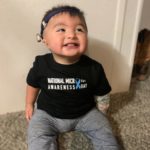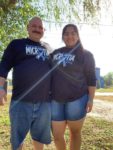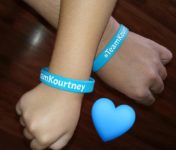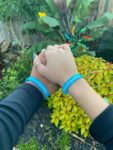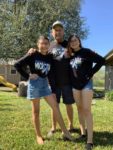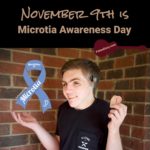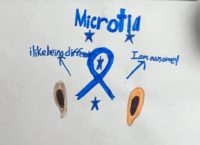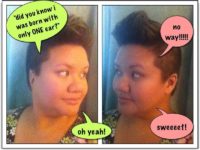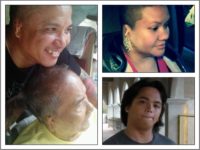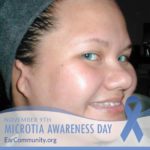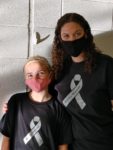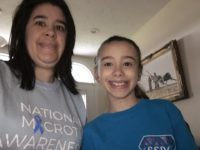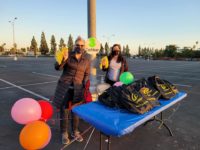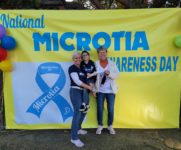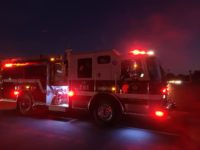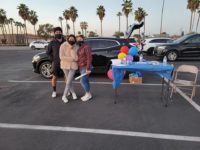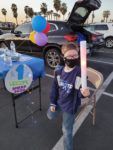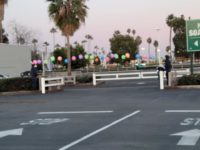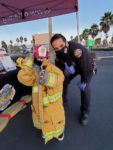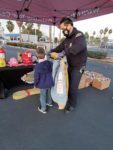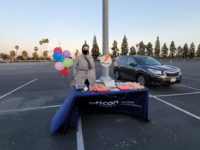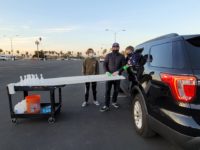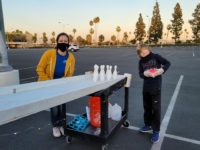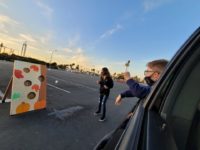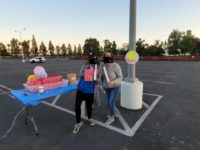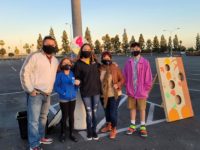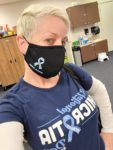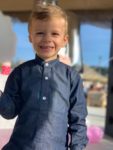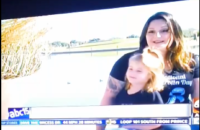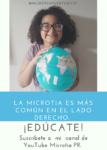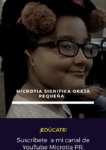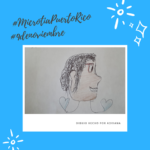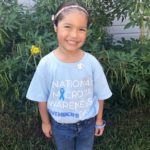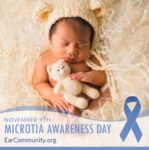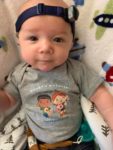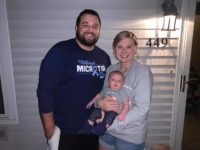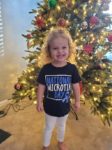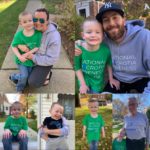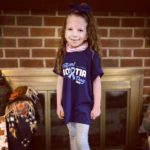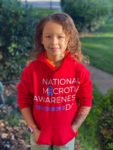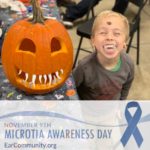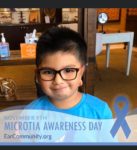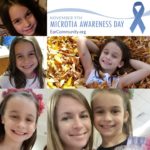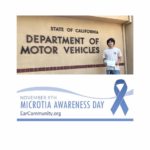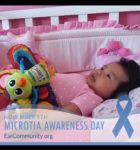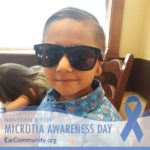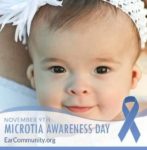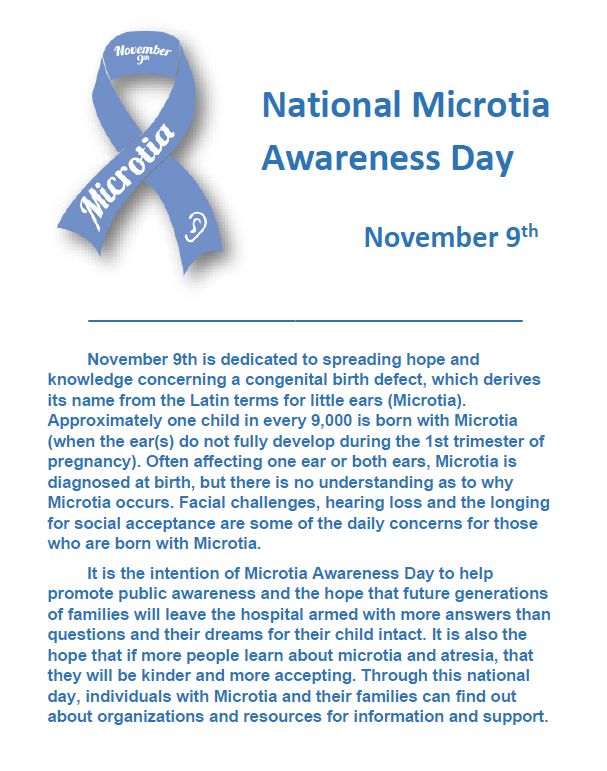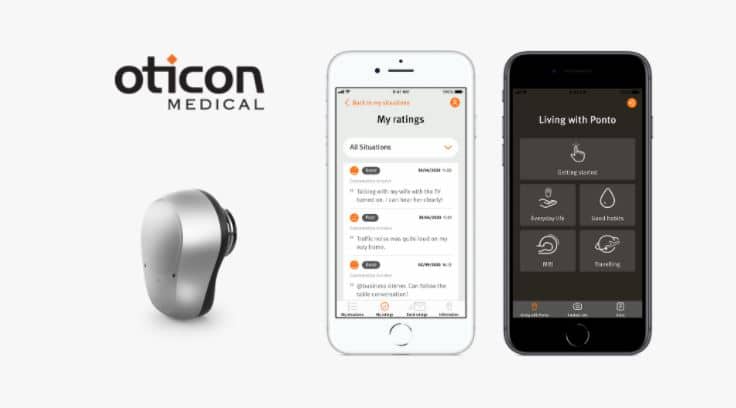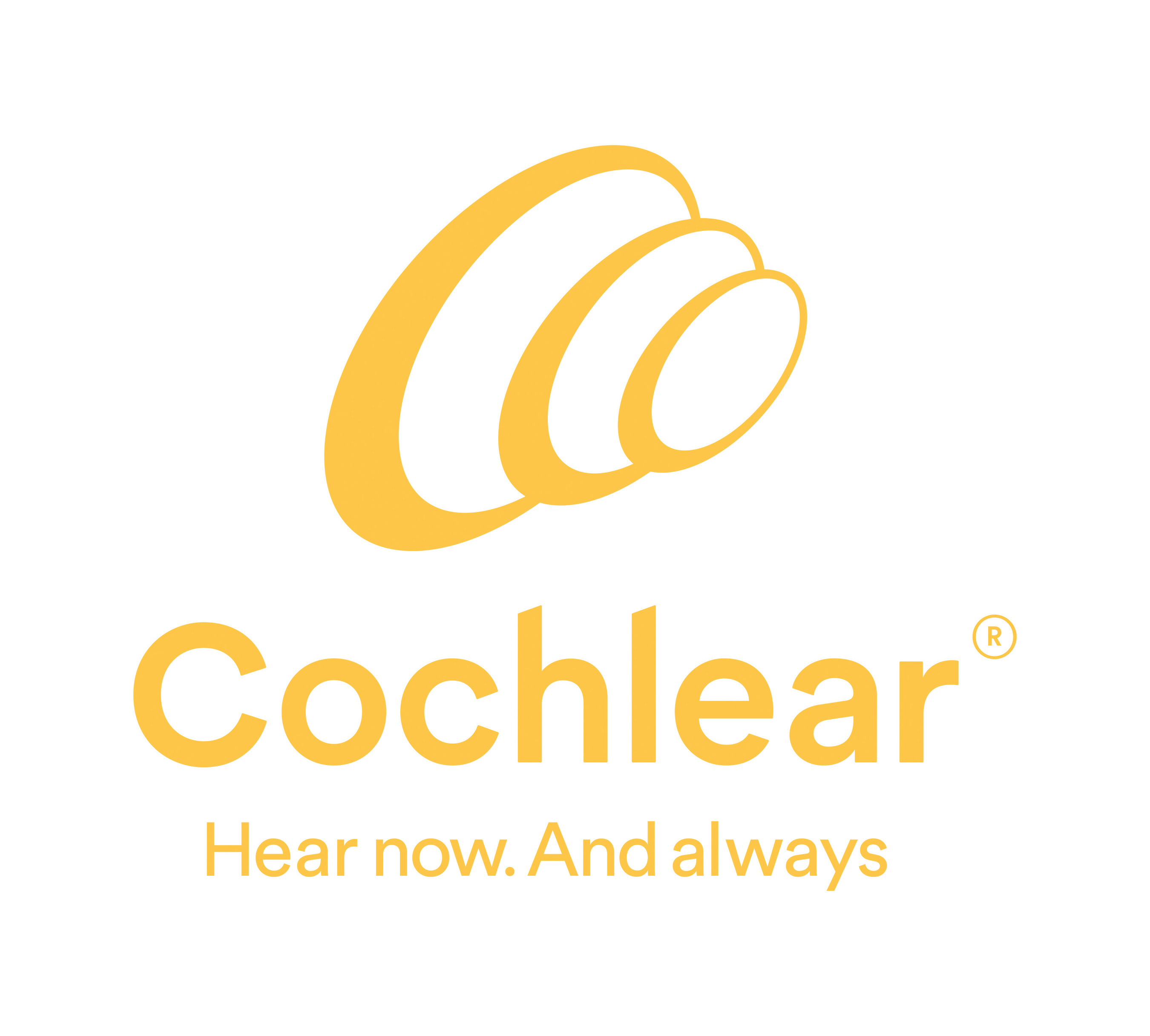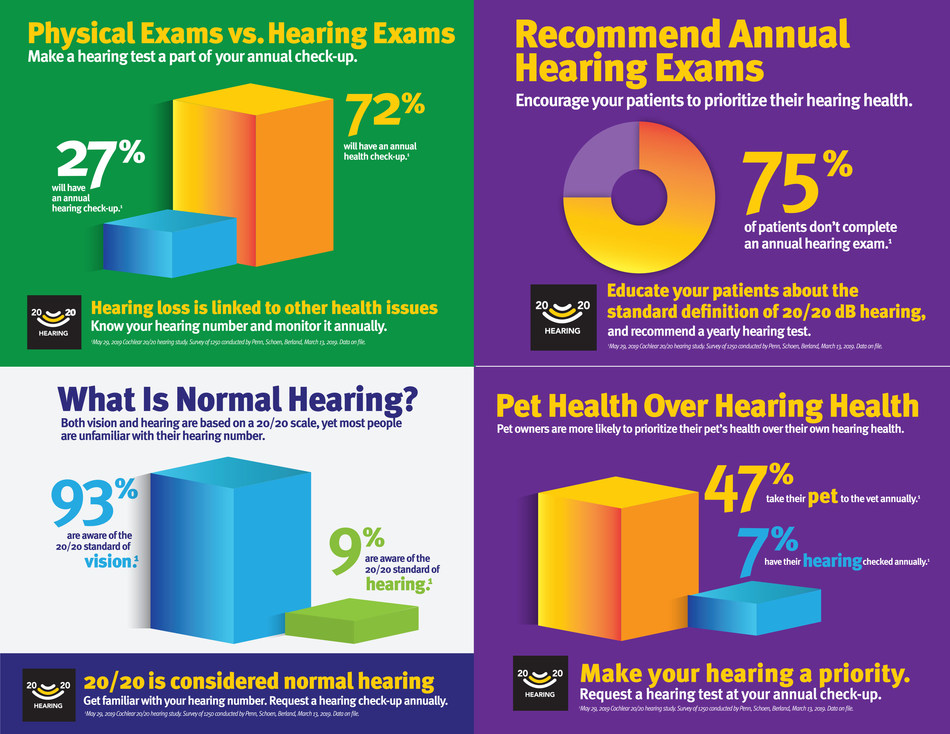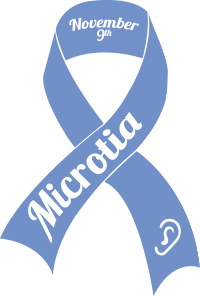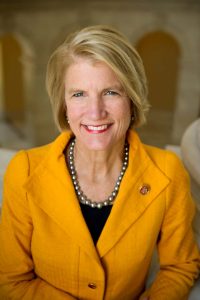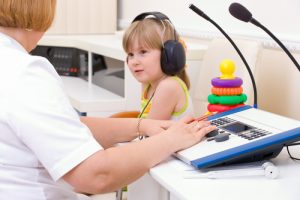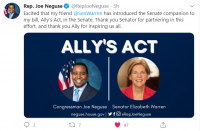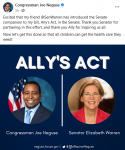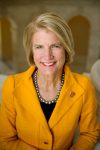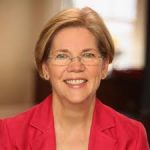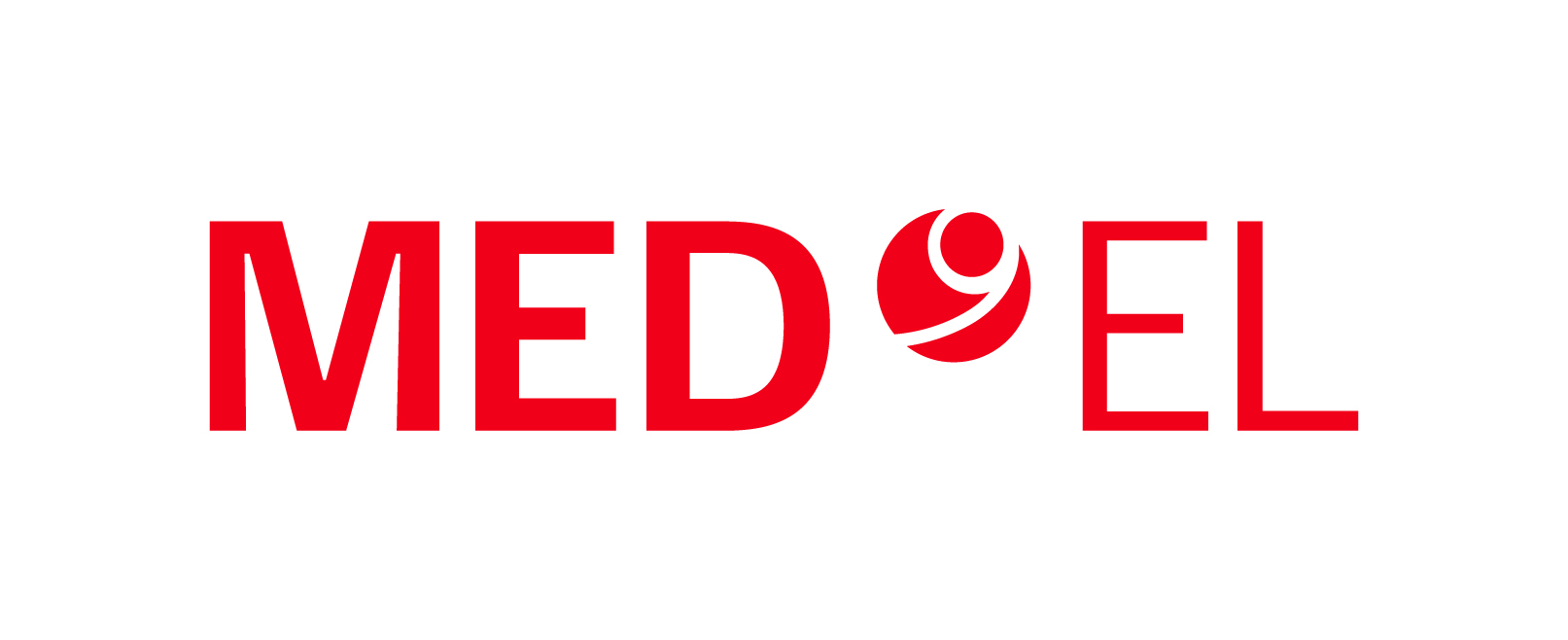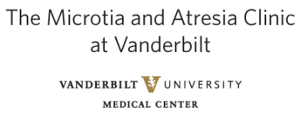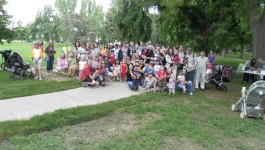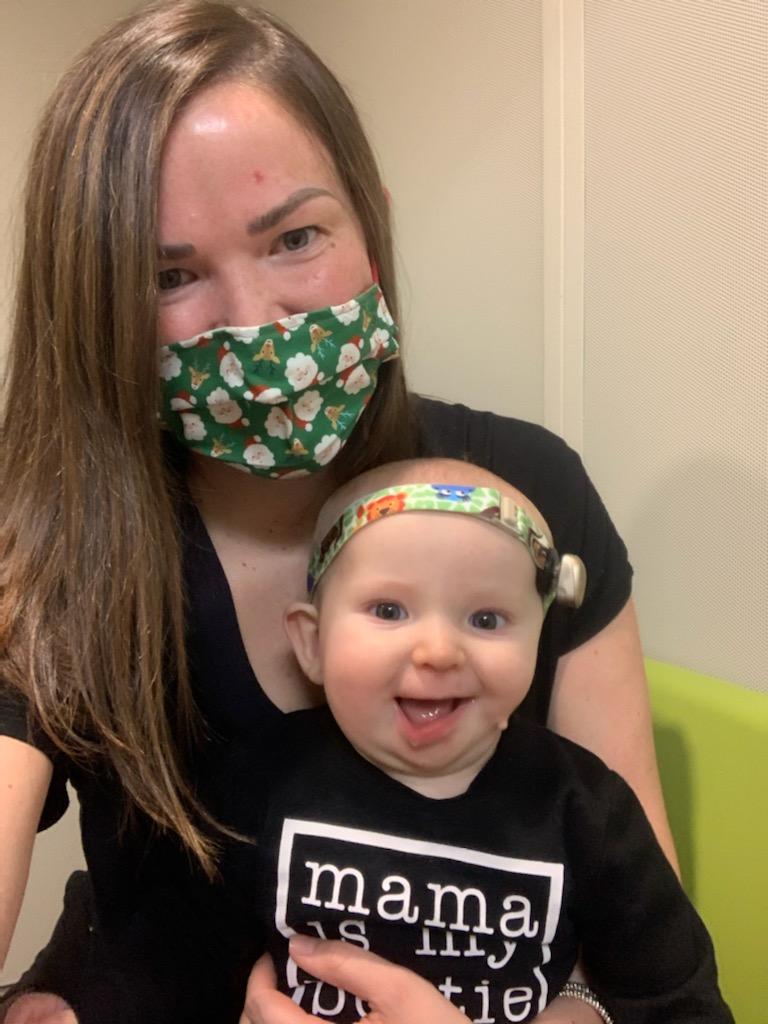
Katie and JJ Shear at his Baha 5 fitting on 12/22/2020, Charleston, West Virginia.
Christmas miracles do happen, even during a pandemic in 2020! Here is a heartwarming story about the love and advocacy of one West Virginia family for their son. Meet the Shear family! Katie and Andrew Shear’s son, JJ, was born this summer – a shining moment during this extraordinarily challenging year. Prior to JJ being born, Andrew and Katie had never heard of Microtia or Atresia and knew little about the world of hearing loss. When JJ was born, Katie was shocked when she heard someone in the operating room utter, “he’s missing an ear.” The Shear Family learned that JJ was born with Microtia and Aural Atresia of his left ear.
Katie and Andrew wasted no time when researching all the options that would help JJ. Once learning more about his hearing loss from his ENT and audiologist, they quickly understood how important it was for JJ to hear better. Especially, during the critical years of development (birth to age 3) when speech and language skills are developing.
After learning about a hearing device that would help their son hear better, they quickly applied for a bone conduction hearing aid (BAHA) through their insurance provider. Katie believed that “by paying into a health insurance provider, assuming that by paying health insurance premiums on a monthly basis would ensure that medical tests, medical devices, and routine care around his ear would be covered. After all, isn’t this why you pay the health insurance premiums, for situations like this?” To the Shear Family’s surprise, they quickly learned that this was not the case. JJ’s family was denied their claim for a bone anchored hearing device for their son by United Health Care. The response from their insurance provider was that a hearing device was “not medically necessary” and “to seek alternative options” even though JJ’s ENT and audiologist both recommended the use of a bone conduction hearing device to help JJ hear. While the family had already researched all options for JJ’s hearing, they already knew that there was no alternative option to help him hear better at this time other than with a hearing device. The family then filed an appeal with their insurance provider, but sadly their appeal was also denied.
The Shear Family was still hopeful to get JJ a hearing device though. A couple of months later, Andrew decided it was time to make a job transition. Under his family’s new insurance plan and provider, they applied for a BAHA for JJ. Again, to the family’s surprise, the new insurance provider (Meritain Health) also denied their claim for a hearing device for JJ. This time the insurance provider stated that “A BAHA is classified as a hearing aid and we don’t cover hearing aids.” This is when the Shear Family knew they had to look at other options to help JJ hear.
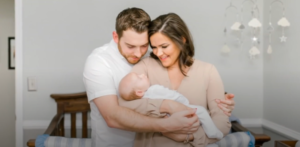
Parents will do anything to give their children a healthy and normal life, but for one Charleston family it has been an uphill battle. (Courtesy of Kara Blakeman Photography via the Shear Family)
Luckily, Katie and Andrew discovered the Ear Community Organization early on when researching Microtia and Atresia. While researching information for JJ, the family also noticed that Ear Community was championing a piece of legislation called Ally’s Act (H.R. 5485 and S. 4532), a bill that would help ensure that private insurers cover the very hearing device that JJ had been denied twice by two different insurance providers the family had coverage with. Katie reached out to Melissa Tumblin, Founder of Ear Community, and immediately found a friend and advocate. The Shear family’s situation is exactly why Ear Community is championing Ally’s Act. Katie and Andrew then applied for a BAHA through Ear Community for JJ. As a way of helping give back, Katie and Andrew have begun advocating for Ally’s Act and are hopeful that this bill will become the law someday. The Shear Family does not want another child to be denied the opportunity to hear like their son JJ was. Katie and Andrew shear’s story was also featured on their local news in a news clip that can be found here.
Ear Community’s board of directors were touched by JJ’s story and yet so disappointed to see the uphill battle the Shear family had faced with their insurers in trying to provide full access to sound for their son with a hearing device. Melissa Tumblin stated that “Families shouldn’t have to fight to get hearing devices that would help their children thrive in life. Also, when medical professionals state that something is medically necessary, insurance companies shouldn’t have the authority to override and go against the opinion of a medical professional knowing that these children would benefit from this type of hearing device technology.” JJ Shear was fitted with his NEW Baha 5 on Tuesday, December 22nd, 2020 by Dr. Janet Lauerman in Charleston, West Virginia at the Charleston Hearing Care. Katie Shear had
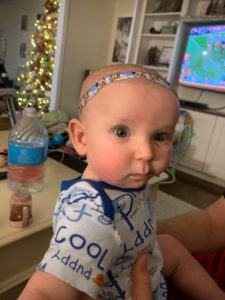
JJ Shear practicing wearing a soft band head band
been preparing for this day for JJ as soon as they found out a bone conduction hearing device would be donated to him. In fact, she had purchased a soft band head band for JJ to wear for the past couple of weeks so he would be used to wearing a band on his head for when they received his Baha. Katie Shear shared with Ear Community that ever since JJ’s Baha was turned on, “he is more alert and responsive. In fact, JJ has become quite the little wild man since getting home following his appointment. Katie and Andrew Shear are grateful for JJ’s new Baha 5 and said “finding this community has been such a blessing…Ear Community is an amazing resource for new parents and families. Thank you to Ear Community and Cochlear Americas for donating a Baha to JJ! Words do not even begin to describe our appreciation to the people who have made this possible. We can’t wait to see how JJ continues to thrive every day with is Baha!”
Thank you to JJ’s audiologist, Dr. Janet Lauerman, for all the help and education she provided to the Shear Family while trying to do what was best for JJ and for helping JJ’s family appeal with their insurance providers. A special thank you to Cochlear Americas, a proud sponsor to the Ear Community Organization since 2011, for collaborating with Ear Community so both organizations, together, could help provide JJ a Baha 5 and the gift of sound! As they say, – it takes a village! Many people were involved while trying to help JJ hear. A very special thank you to Keesha Pfeiffer (Director of Volunteer Strategy & Engagement, Cochlear North Americas), Patti Trautwein (Vice President of Marketing, Cochlear North Americas) and Tony Manna (President of Cochlear North Americas) for making sure that JJ received his device in time for Christmas! “Cochlear is the global leader in implantable hearing solutions. It has a dedicated global team of more than 2,500 people who deliver the gift of sound to those with hearing loss in over 100 countries. Its vision is to connect people, young and old, to a world of sound by offering life enhancing hearing solutions. In 2013, Cochlear celebrated 100,000 Baha System users – all with unique stories of how being able to hear again has impacted their lives. The Cochlear promise of “Hear Now. And Always” embodies the company’s commitment to providing its recipients with the best possible hearing performance today and for the rest of their lives.”
Ear Community would also like to extend a warm thank you to our individual donors and members of the community who want to help us continue our work – none of this would be possible without your support! We are so happy to have been a part of helping JJ hear better! Thank you again to everyone involved who helped make JJ’s Christmas extra special by providing him with the gift of hearing!
Ear Community
www.EarCommunity.org

